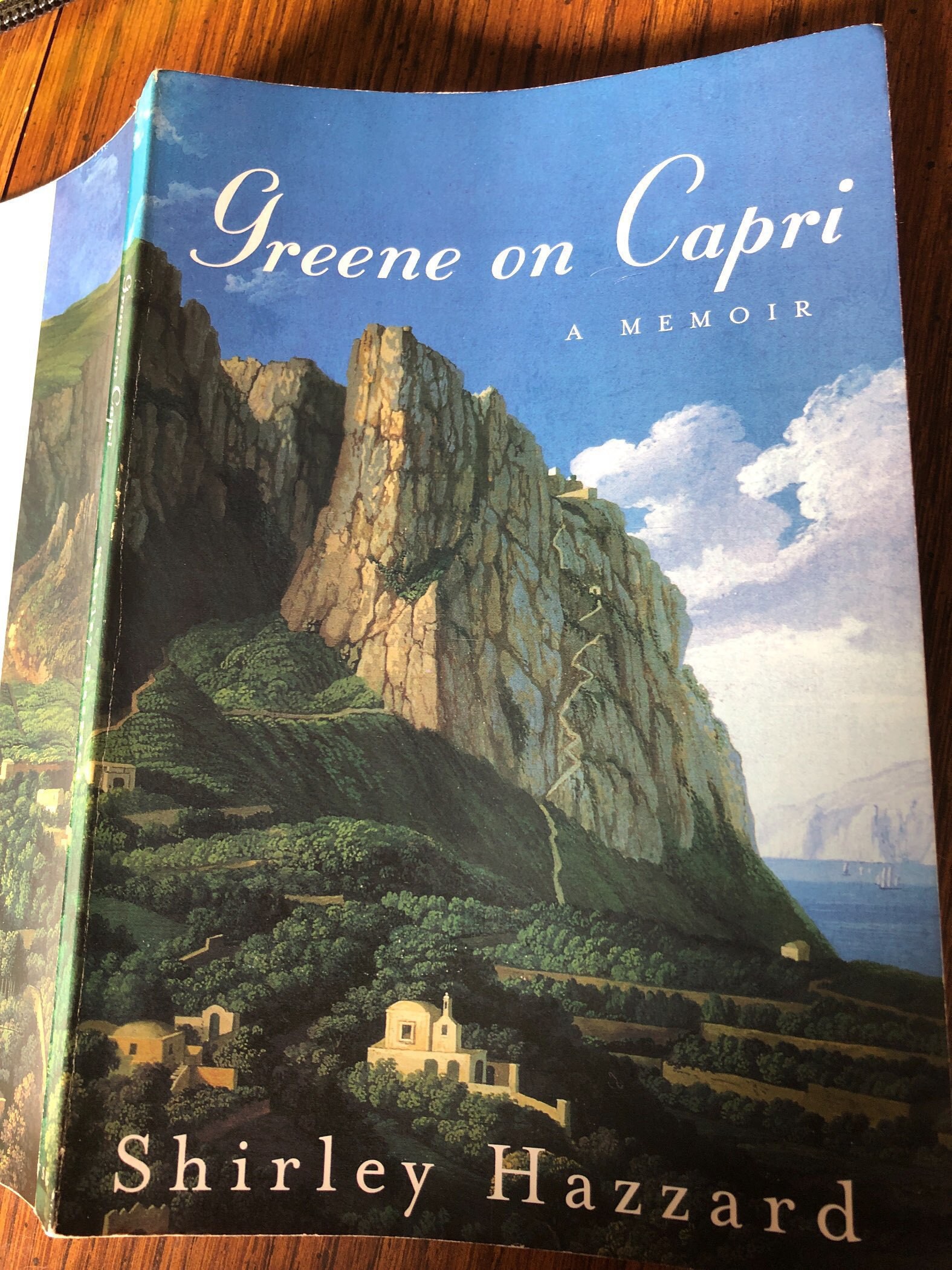Shirley Hazzard's *Greene on Capri: A Memoir* 📚
Shirley Hazzard’s Greene on Capri recounts the relationship that Hazzard and her husband, the Flaubert scholar and translator Francis Steegmuller, had with Graham Greene over two decades, from the late 60s to the late 80s. Their friendship started when, in a Capri cafe, Hazzard overhead Greene struggling to remember a line from a minor Robert Browning poem. Hazzard, who seems to have most of the English literary canon memorized, walked up to him, reminded him of the line, and walked away. Greene, intrigued, struck up a conversation at their next encounter, and the friendship was born.
Hazzard’s book is wonderful for several reasons. Chief among them is the fact that it’s as much a portrait of Capri as of an aging, cantankerous Graham Greene: for such a small island, its history is remarkable. (Henry James called it “beautiful, horrible, and haunted.")
Another of the book’s delights is the wide range of minor characters that flicker in and out of its pages, among them Hazzard’s learned husband Francis Steegmuller, the vibrant Harold Acton, Norman Douglas, Edwin Cerio, Giorgio Weber, and the Russian ballet dancer and choreographer Léonide Massine.
Hazzard’s own wit and rich knowledge of literature are evident throughout. Her sentences are typically simple, and can quickly shift to stunning:
Thinking of those times of transition [throughout Capri’s history]—and of their violations, contested in vain and now institutionalized and extended—a lover of Capri must gratefully wonder that beauty continues to prevail there—not as touristic prettiness, but in the grand and ultimate indifference of Nature to the antics of humankind. In a future age, perhaps, even today’s silliness may slide away, as have the courts of emperors, and the incursions of centuried invaders.
Erudite, literary memoirs are one of my favorite genres, and this book is perhaps my favorite of them all.
